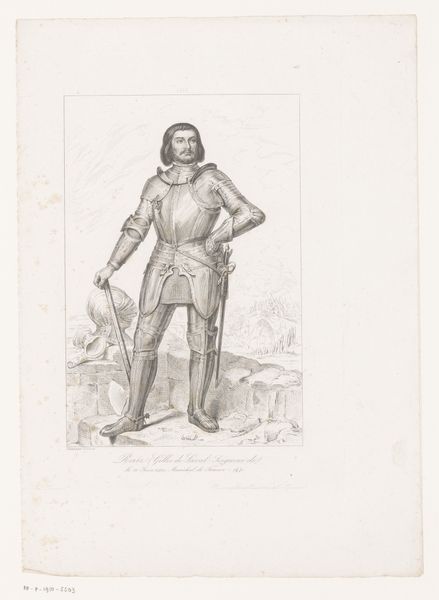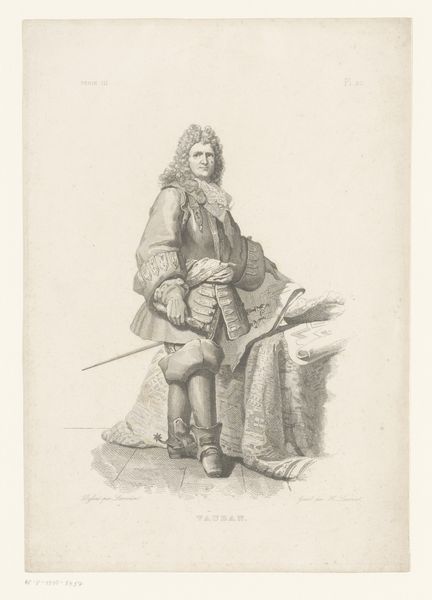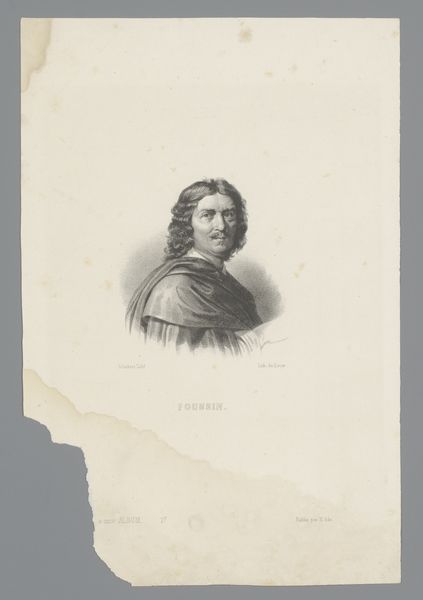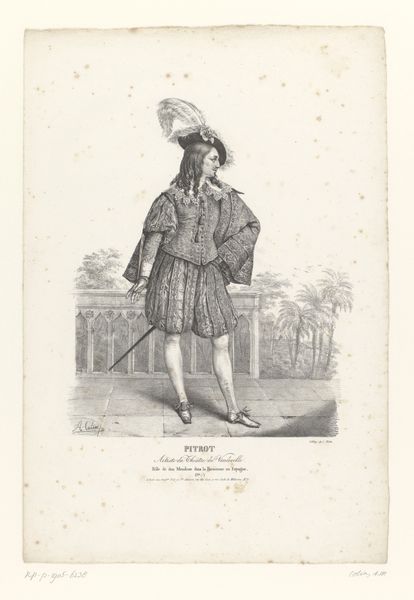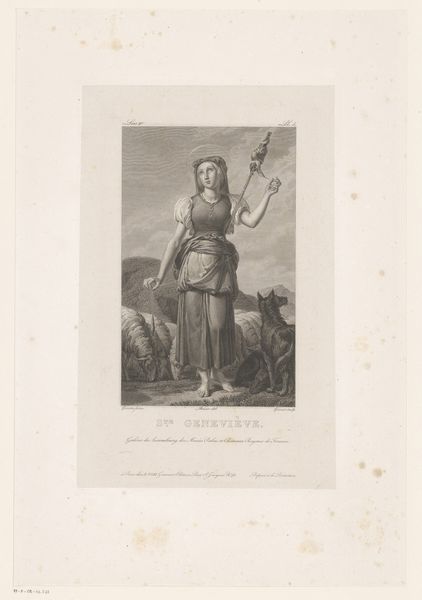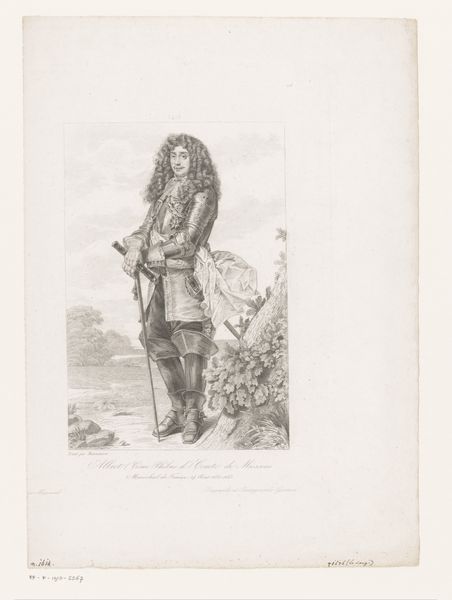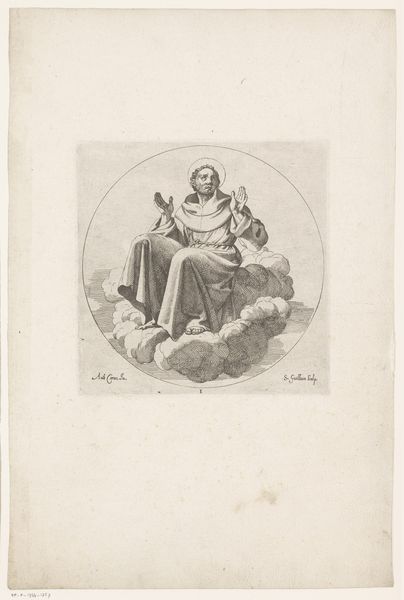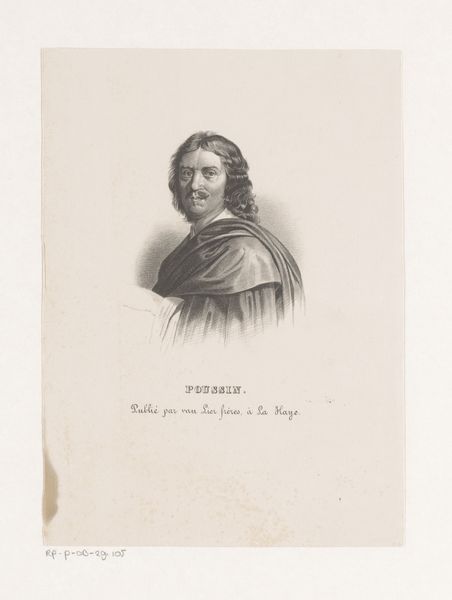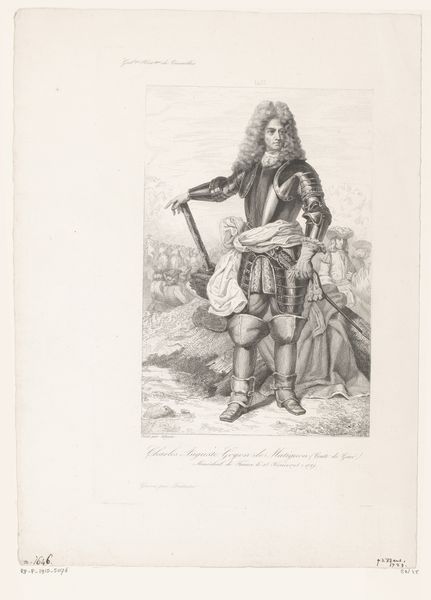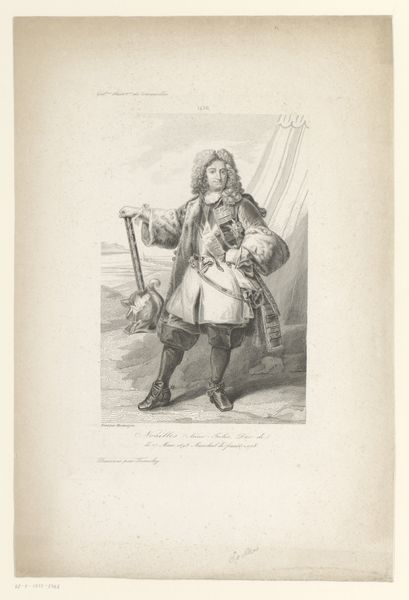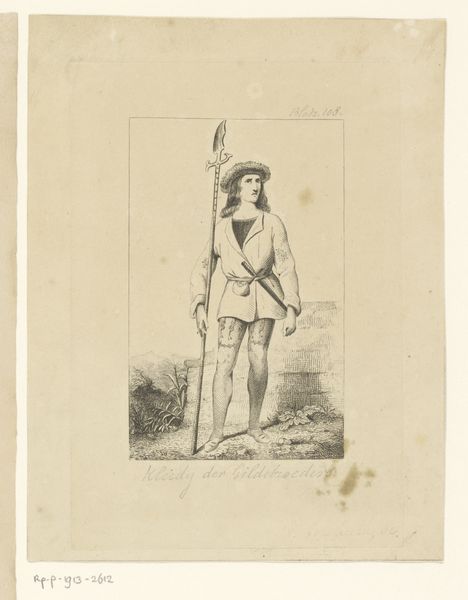
drawing, graphite
#
portrait
#
drawing
#
pencil drawing
#
graphite
#
history-painting
#
academic-art
Dimensions: height 264 mm, width 235 mm
Copyright: Rijks Museum: Open Domain
Curator: Nicolas Edouard Lerouge created this portrait of Jean Poton de Xaintrailles between 1838 and 1841, rendered in graphite and pencil. What are your initial thoughts? Editor: There's an arresting stillness here. It's predominantly graphite and it captures the texture of both the sitter's skin and polished armor so vividly. He appears almost contemplative, despite being in his full military regalia. Curator: Absolutely. This portrait, made almost 400 years after de Xaintrailles's death, fits squarely into a specific historical narrative: that of the chivalrous French hero. Lerouge deliberately evokes the idealized past, where identity, honor and military prowess were intertwined for men of the French court. Editor: I'm struck by how Lerouge emphasizes the materiality of warfare. The meticulously detailed armor speaks of skilled craftsmanship, but it is also there to evoke warfare as industry – protection and status as commodities produced to fuel endless political contest. Curator: A crucial element! The pose too. The subtle relaxation of the figure and the somewhat ambiguous and distant horizon contrast beautifully, making the military garments feel both necessary and superficial at once. The image also presents an example of masculine codes: one arm absent in its armor, and another leaning softly in comfort upon the prop beneath it. Editor: I agree. And this juxtaposition of repose against armor can make us reflect on what de Xaintrailles could be fighting against; maybe his interior battles that have no materiality other than their consequences. We have the hardness of metal and stone, and a softened flesh that bears the wounds of external conflict and history. Curator: By examining those intersecting threads – personal vulnerability and heroic stature– we confront history’s inherent complexities, which also provides an open doorway for discussions around power dynamics, gender roles, and our continued relationship with representations of leadership in both past and present eras. Editor: Right, thinking about it more, the drawing really captures both a human story and a grander statement about labor, industry, and war. Food for thought!
Comments
No comments
Be the first to comment and join the conversation on the ultimate creative platform.
